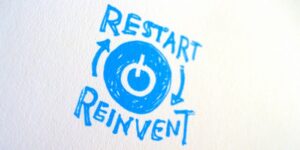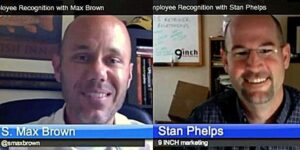
Job Design: Is It Time to Rethink Your Approach?
EDITOR’S NOTE: This is the last article in a 4-part series sponsored by Unit4. The series outlines a new approach to talent strategy for people-centric

EDITOR’S NOTE: This is the last article in a 4-part series sponsored by Unit4. The series outlines a new approach to talent strategy for people-centric
It’s been quite a year for employment law. We’ve seen minimum wage increases, Affordable Care Act implementations, the legalization of marijuana, and the more recent
Before I started my career in Human Resources, I had a perception that the HR lady sat behind a desk the entire day, listening to
Would you tell your other half, your housemate or your child not to tell you what they think? Or to rearrange their day for you

I have a little confession to make. I find power to be delicious. For most of my life I have worked as a kind of

Dan Pink’s book “Drive: the Surprising Truth about What Motivates us” has thrown a major monkey wrench into how we think about motivation. For years it

The first quarter of 2014 brought welcome optimism for some of the world’s major economies. On the face of things, it’s great news. However, businesses

The balance of power is shifting in the employer/employee relationship. What does it mean for the future of work? The #TChat crowd weighs in

The balance of power is shifting in the employer/employee relationship. What does it mean for the future of work? The #TChat crowd weighs in

The balance of power is shifting in the employer/employee relationship. What does it mean for the future of work? The #TChat crowd weighs in

The balance of power is shifting in the employer/employee relationship. What does it mean for the future of work? The #TChat crowd weighs in

The balance of power is shifting in the employer/employee relationship. What does it mean for the future of work? The #TChat crowd weighs in

The balance of power is shifting in the employer/employee relationship. What does it mean for the future of work? The #TChat crowd weighs in

“The war for talent is over, and the talent won.” What’s behind this revolution? Let’s discuss this week at #TChat events with talent management analyst, Josh Bersin

How can one person successfully juggle multiple HR responsibilities? Suggestions from a professional who has made it work

Are technology and innovation like love and marriage? If you care about the future of work, look closer at this special relationship

Don’t miss the hot ticket at this year’s HR Tech Conference, as #TChat goes live with experts at a very special Employee Engagement Roundtable. Join the conversation October 7!

Grand as it may be, today’s “always on” connectivity experiment is taking a toll, and business leaders are just starting to respond. But how can we help ourselves?

Do you see a talent tsunami ahead? What is your organization doing to protect your investment in employee morale and performance?

It’s no secret that workforce recognition pays. The trick is getting recognition right. How can employers make it count? That’s the focus in the TalentCulture community at this week’s events…

World-class employers work overtime to create an environment that attracts new talent and keeps existing employees on board. What can the rest of us learn from them? Ask yourself 4 questions…

Is your organization facing barriers that stand in the way of employee engagement? Try these tips to overcome 6 key obstacles. (Includes infographic.)

It’s no secret. Both the “art” and “science” of talent management are experiencing a fundamental transformation. Disruption is everywhere. The future is uncertain. So why should we be celebrating?

Why does HR keep asking for a seat at the table? We’re already there. The big question now is: What next? That was the focus this week at SHRMTalent and at #TChat forums…

As business looks for new sources of competitive advantage, how can innovative workforce strategies lead the way? HRO Today Forum creator, Elliot Clark, examines the latest research findings with the TalentCulture community…